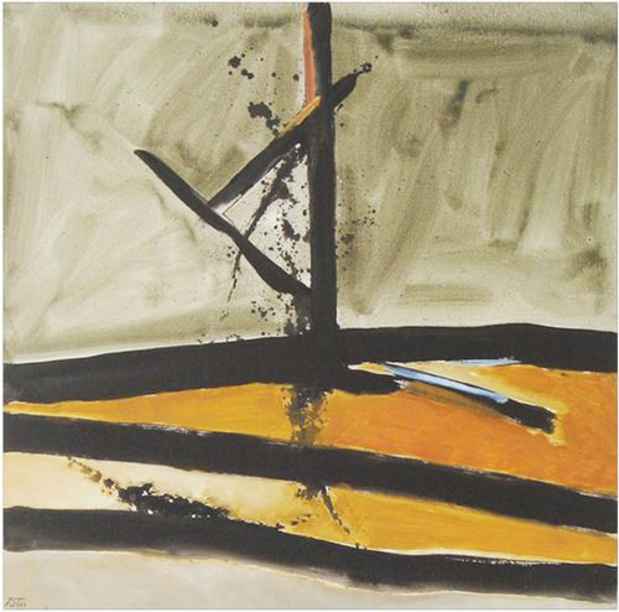Dominique Thiolat “A Painter Born”
Paul Rodgers/9W Gallery

This event has ended.
Dominique Thiolat’s case is exemplary. Born to be a painter, he belongs to a generation in France which felt the need to take the measure of modern art’s return to Europe, following the enormous vacuum left by the Second World War. We must look back on this history if we want to understand the artist’s situation at the beginning of the nineteen seventies when he began his work.
The heavy hand of totalitarianism in the nineteen forties had driven creative impetus towards America. In post-war France, what was known as the School of Paris, was looking backwards towards the pre-war past and promoting a style of abstract cubism, lacking conviction.
Voices coming from the other side of the Atlantic were beginning to speak of a new painting being invented by such names, among others, as de Kooning, Motherwell, Newman, Pollock and Rothko. The notion that New York might replace Paris as the center of modern art was taking shape. The French cultural milieu, shaky and uncertain, responded by adopting a mind-set of imaginary barriers to the outside world. Then, the events of May ’68 broke upon the scene and new artistic freedom finally emerged.
Dominique Thiolat belongs among those who understood what May ’68 offered in terms of innovation for his home country of France. Born, as I have said, to be a fine art painter, the issue for him was to open up to this new American painting and to offer a scene in his canvases to its astonishing gestural energy.
It should be remarked at this juncture, for the sake of historical accuracy, that Thiolat’s painting benefited from a vast movement of critical thought centered on the review Tel Quel, whose specialist in fine art was the poet and critic, Marcelin Pleynet.
However, since nothing is ever simple, everything was turning around culturally in the second half of the twentieth century. In New York, a new generation of artists wanted to free itself from modern art, and from the new American painting of its immediate predecessors, through developing contemporary movements such as Minimalism, Pop and Concept-based art.
For Thiolat, again, what had been achieved by the great American painters was beyond debate and he wanted to pursue the direction of their work, distinct from this new generation. Rather than abandon the American painting that he had so recently discovered, he sought to relate it to the history of art, which for him, most immediately, meant Manet, Cezanne and Matisse. So it falls out that Dominique Thiolat has chosen an independent stance from much contemporary art of recent decades.
The question presents itself: what is the relationship between modern art and global contemporary art? Contemporary art of the last fifty years or so has placed a strong emphasis on the ‘object’. Yet, art is always a means for developing a subject. If we can say that Dominique Thiolat’s painting is exemplary, it is because he has understood this crucial artistic truth. It has prompted him to explore the fundamental elements of painting, which are gesture and color, in search of light, which is to say happiness.
Media
Schedule
from November 20, 2013 to December 21, 2013